Time moves variably within the walls of Nilkanth Ayurveda Clinic. Here, woven screens filter sunlight into unassuming patterns, handcrafted terracotta lamps cast a warm glow, and curved pathways guide visitors through spaces that seem to flow into one another. When Studio Rei took on this 593 sq ft project, the brief was pretty straightforward—they had to craft a physical manifestation of Ayurveda’s core principle, “healing is a journey, not a destination.” Purvi Tank, Principal Architect of Studio Rei, elaborates, “The client’s brief to me was to have a minimal and simple design for the clinic along with specifications for a monotone look as much as possible. To contemporise the design of Nilkanth Ayurveda Clinic without losing its essence, I drew inspiration from the idea of slowness, which is central to Ayurveda.”
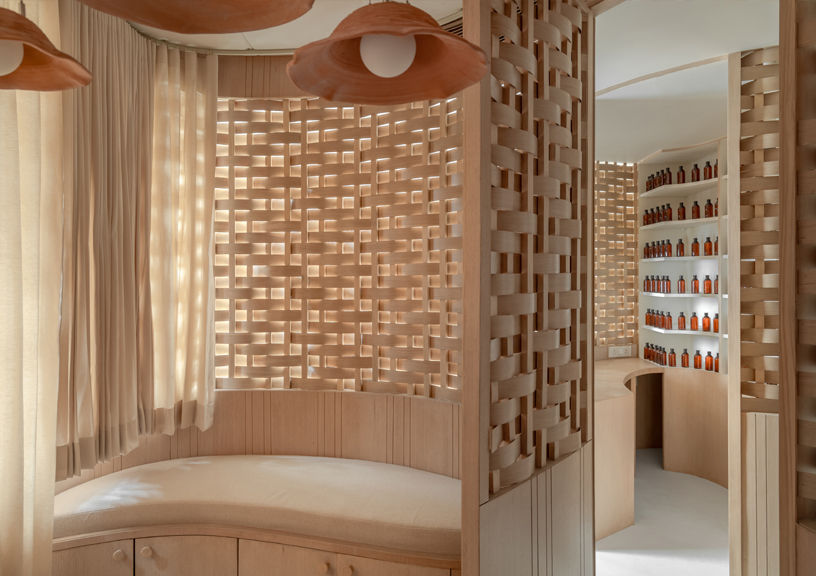
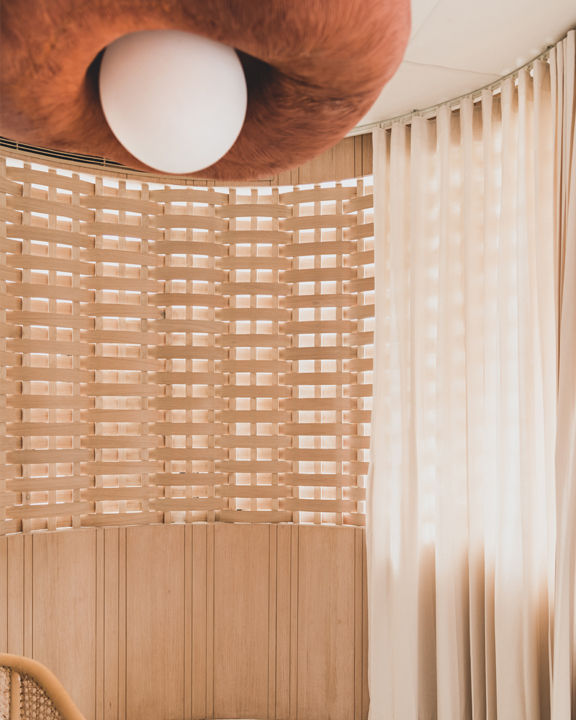
The Spatial Flow
The moment one steps into the clinic, a sense of expansiveness unfolds despite its compact footprint of 593 square feet. The spatial layout follows a flowy arrangement that enhances efficiency while cultivating an open and tranquil atmosphere. Two consultation cabins, a waiting area, restrooms, a pharmacy, and a pantry stretch across the length of the space, connected through the synthesis of materials and forms. “We tried to deconstruct what goes into Ayurveda and dwell deep into slowness and calm nature of it,” reveals Purvi.
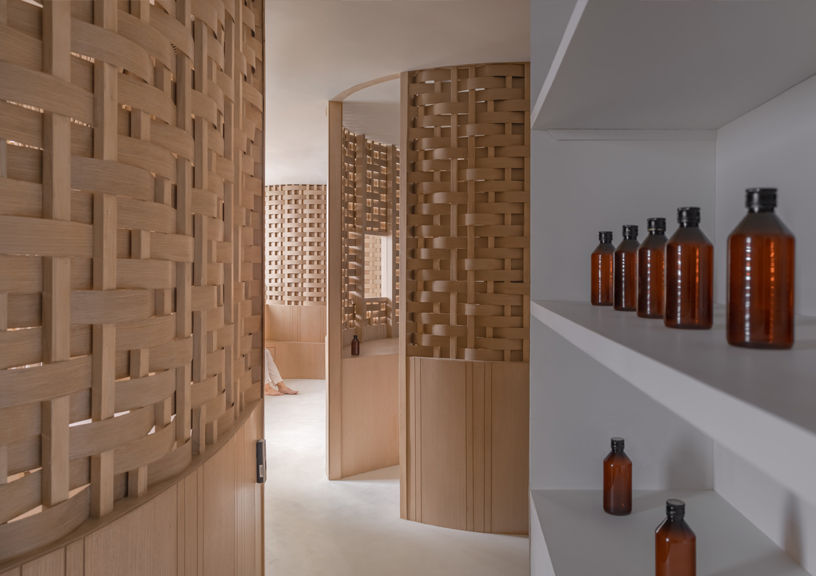
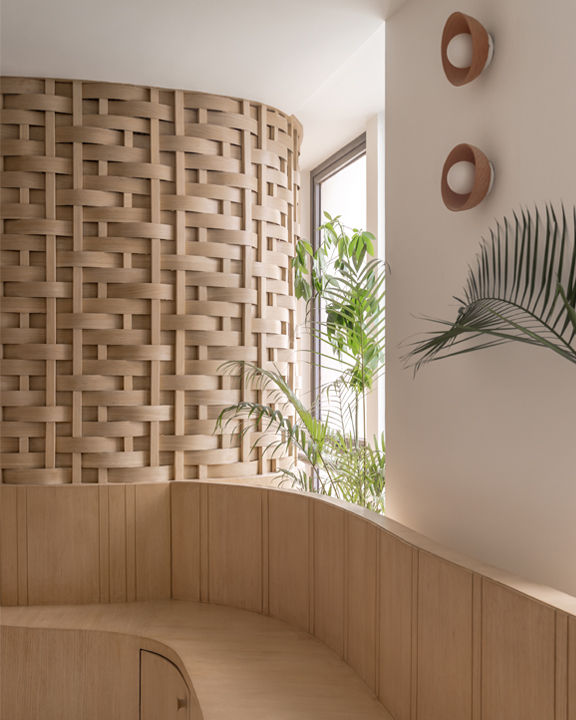
The Philosophy of Slowness in Design
Inspired by the idea of slowness, Studio Rei incorporated traditional craftsmanship techniques that echo the methodical and mindful nature of Ayurvedic practice. The partition walls, for instance, were reimagined using woven paper veneer—a contemporary material, yet executed through the age-old technique of weaving. This method not only creates a rich, textured aesthetic but also serves a functional role, allowing light and air to filter through, reinforcing the idea of breathability and openness.
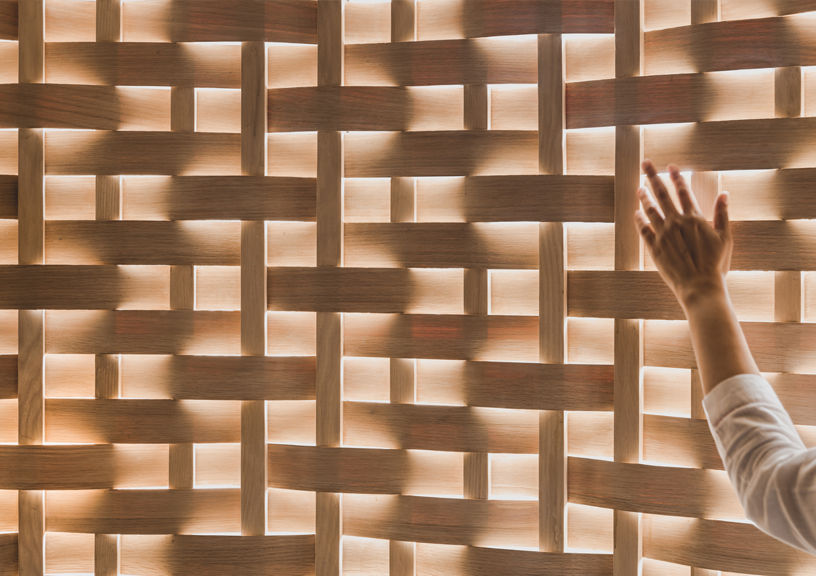
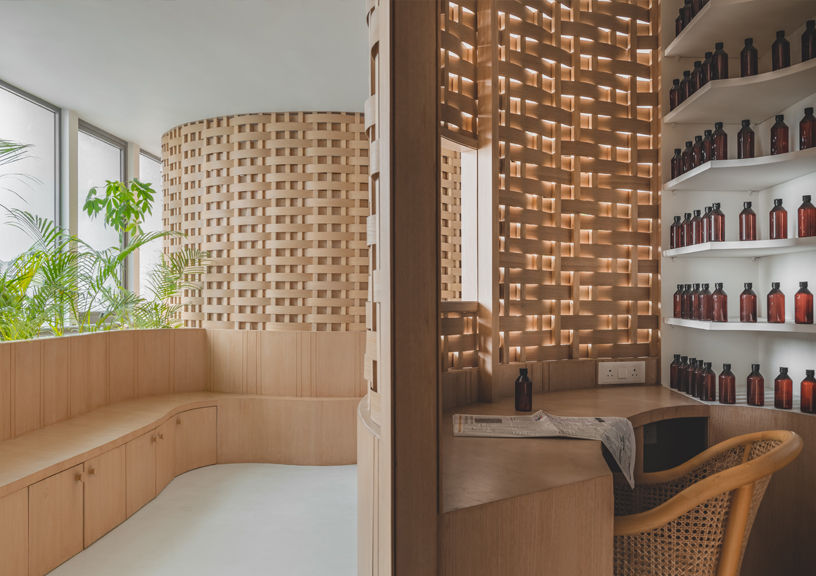
Illuminating Tradition
The studio’s commitment to slow craft is evident in the lighting design. Working closely with local potters, the team created custom terracotta light fixtures that serve as both functional elements and art pieces. “The process involved shaping the terracotta by hand—a deliberate and time-intensive method that aligns with the Ayurvedic principle of slow, thoughtful creation,” Purvi notes. The warm, earthy tones of the fired clay add to the space’s grounding energy while highlighting the project’s emphasis on sustainable materials.
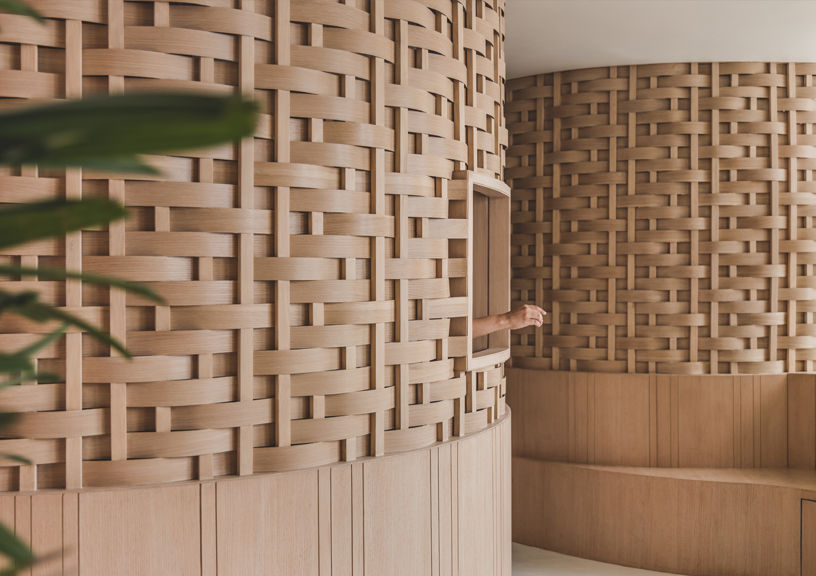
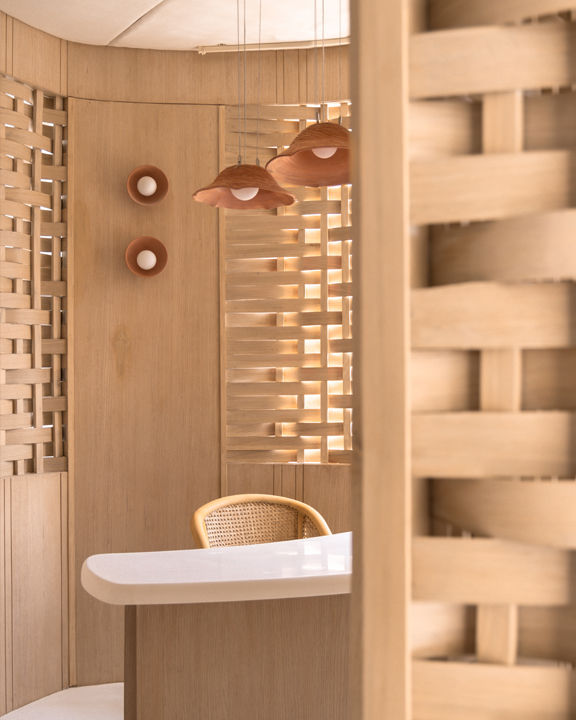
Overcoming Design Challenges
Designing within a small footprint while maintaining a sense of openness was one of the key challenges Studio Rei faced. The curvilinear layout, a deviation from conventional linear planning, was initially met with hesitation from the client. However, its ability to create an immersive experience soon proved its mettle. Another challenge was the integration of woven paper veneer partitions—a material that had never been used in this manner before. The studio’s meticulous detailing and close collaboration with craftsmen ensured that the technique was successfully adapted to the project’s needs.
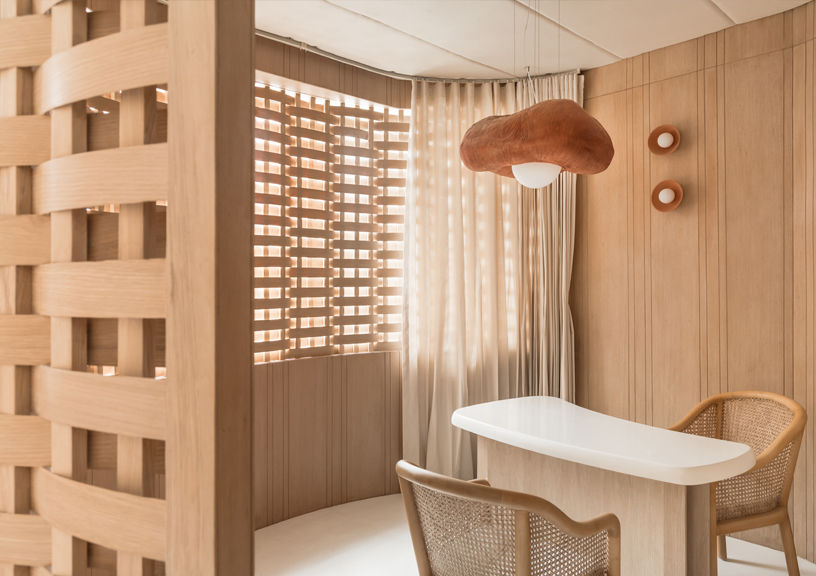
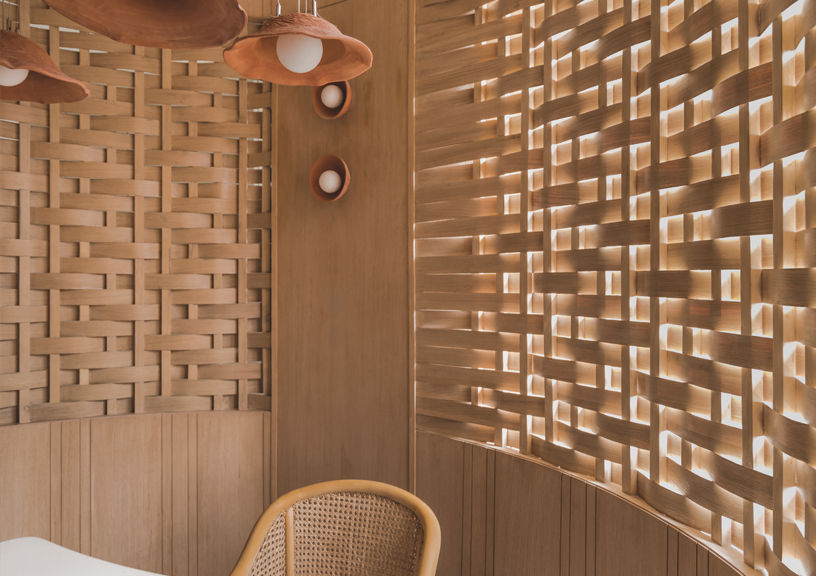
Completed over four months, the Nilkanth Ayurveda Clinic’s success lies in its subtle translation of Ayurvedic philosophy into spatial experience—one where every material choice, every crafted detail, and every thoughtful intersection of light and shadow works together to create an environment that truly supports the practice of holistic healing. In a world that increasingly pushes for faster solutions, this clinic is a gentle reminder to us that some things—be it healing, craftsmanship, or design—simply cannot be rushed.
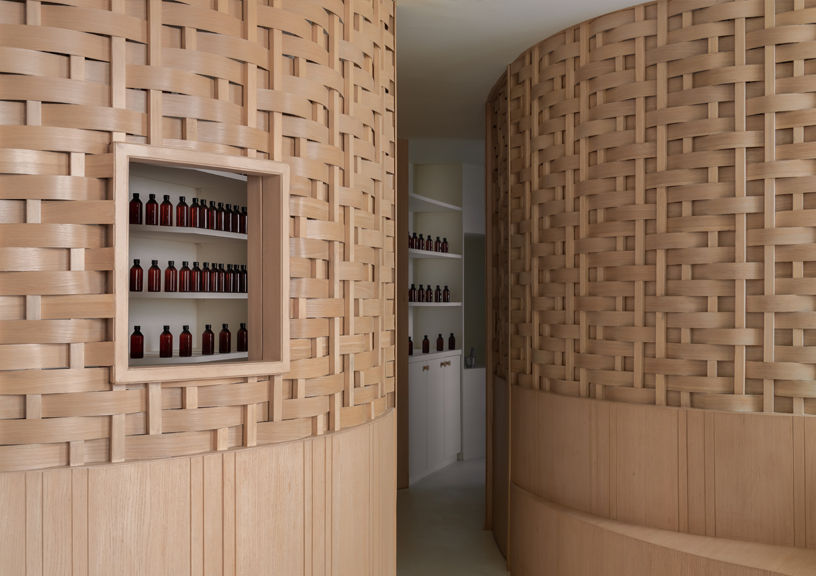
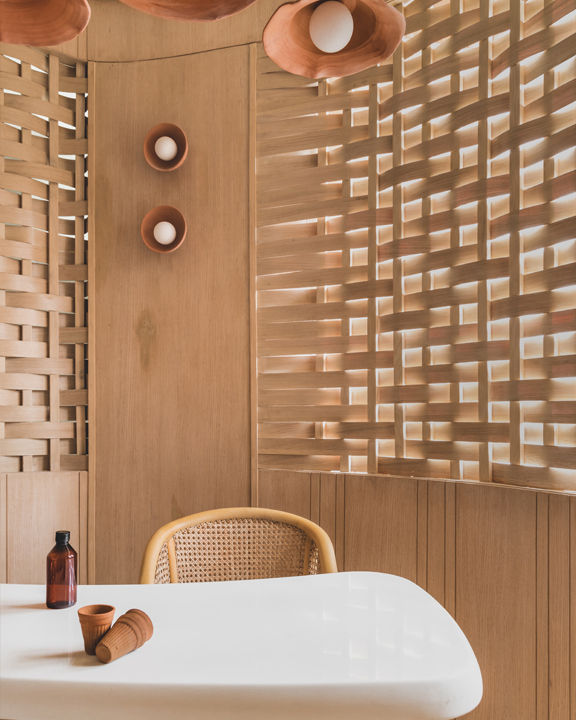
FACT FILE
Name of the project: Nilkanth Ayurveda Clinic
Firm Name: Studio Rei
Design Team and Designation: Purvi Tank, Principal Architect; Nishant Lunagariya, Senior Architect
Website: www.studiorei.art
Location of the project: Ahmedabad
Area (Sq.ft): Carpet Area: 593.4 sq ft
Photo courtesy: The Space Tracing Company
